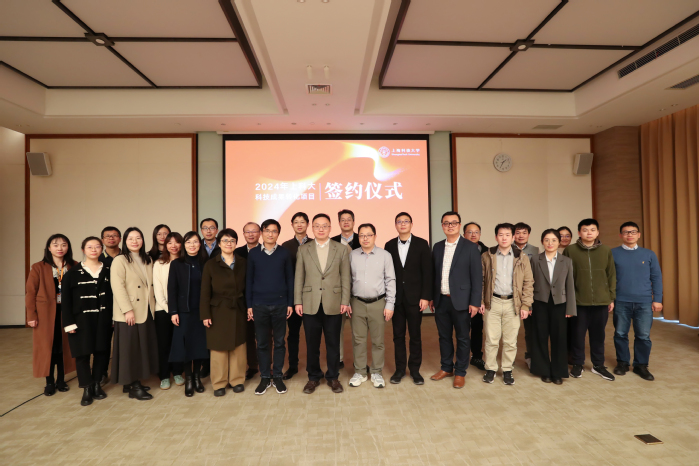ShanghaiTech University held a technology transfer signing ceremony on December 18 at the Conference Center, where the university signed patent licensing agreements with two spinoffs, Shanghai Castalysis Bioscience and Shanghai Finesense. In addition, Shanghai Baoshan Technology Transfer Company, Department of Manufacturing and Equipment of the National Innovation Center par Excellence (NICE), and Shanghai Finesense signed a financing cooperation agreement.
The ceremony was attended by Jiang Ge, vice president of ShanghaiTech University; Song Yixin, CEO of Shanghai Baoshan Technology Transfer Company; Wang Xiaoan, deputy director of Department of Manufacturing and Equipment of NICE; Yan Ming, CEO of Shanghai Castalysis Bioscience; and Tao Yu, CEO of Shanghai Finesense. Representatives from relevant schools and administrative offices of the university also participated.
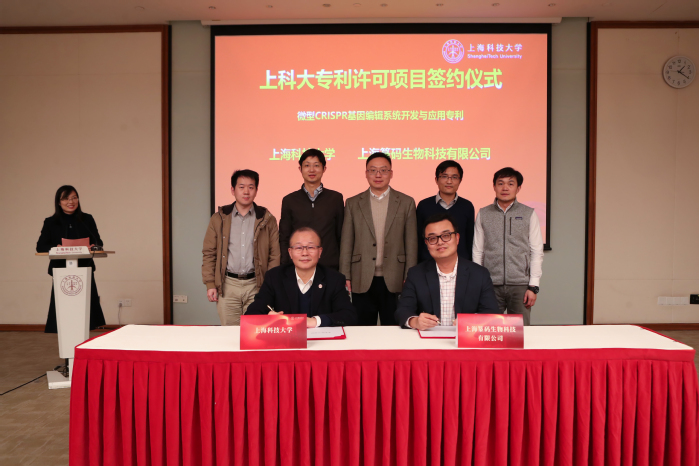
Patent licensing agreement with Shanghai Castalysis Bioscience
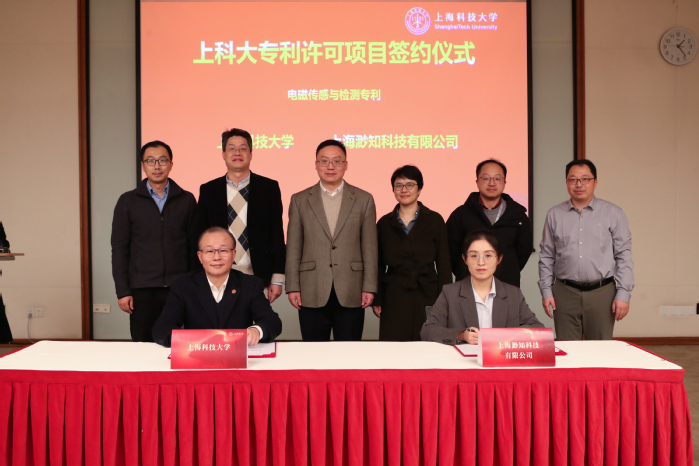
Patent licensing agreement with Shanghai Finesense
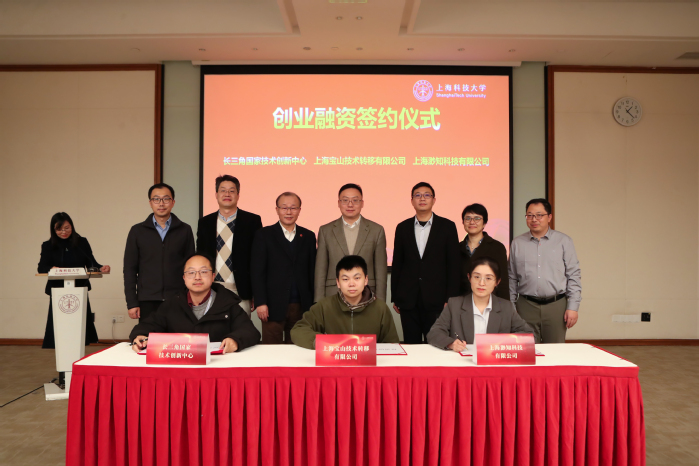
Financing cooperation agreement between Shanghai Finesense, NICE, and Baoshan Technology Transfer
In his address, Jiang Ge highlighted ShanghaiTech’s commitment to the national innovation-driven development strategy. “The university focuses on the transformation of scientific and technological achievements, resulting in over 50 incubated tech startups. We also places importance on the high-quality patent applications derived from original scientific research. Among the over 2,000 patents already filed, 30% have been submitted through the PCT route,” said Jiang. “The university’s Office of Technology Transfer (OTT) has implemented effective mechanisms to continuously facilitate the transformation of research outcomes into new productive forces. We need to keep open and to deepen cooperation with our investment partners.” At the end of the address, he reaffirmed the university’s dedication to fostering innovation, supporting spinoffs, and providing comprehensive services for their growth.
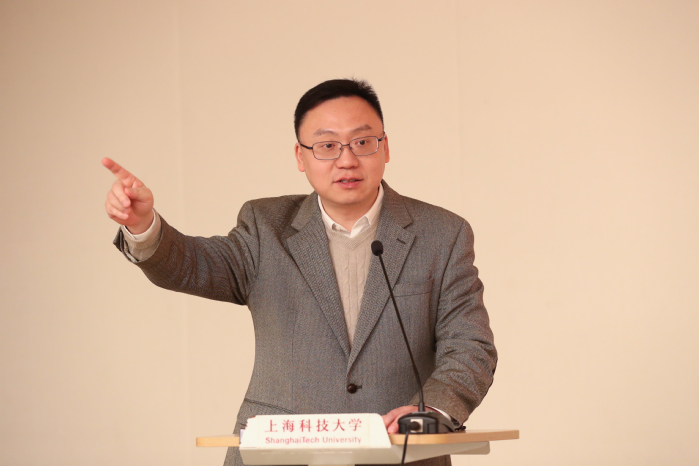
Jiang Ge
Wang Jie, director of OTT, described this signing as a key milestone in ShanghaiTech’s efforts to commercialize research outcomes from its “World-Class Discipline” program. “The model we have adopted—combining concept verification, financing, and patent licensing with an investment-first-equity-later strategy—has pioneered a new path for patent commercialization among universities,” added Wang.
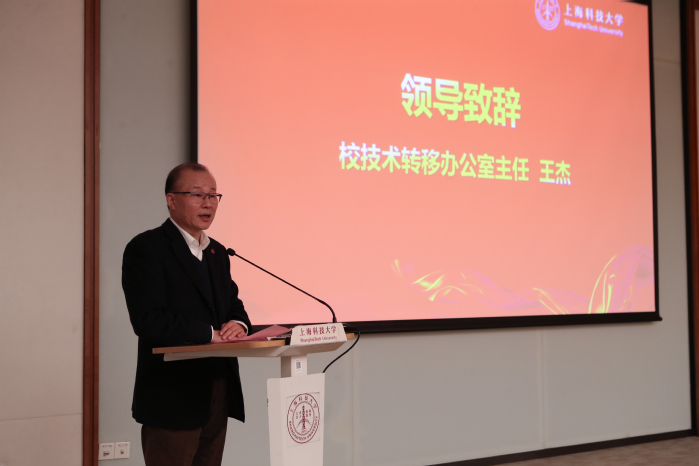
Wang Jie
“Shanghai Castalysis Bioscience is leveraging the gene editor system to develop gene therapy pipelines targeting genetic, chronic, and infectious diseases, aiming to provide patients with first-in-class and best-in-class one-time lifelong therapies.” Xu Xuguang, associate dean of the School of Physical Science and Technology (SPST), introduced the patent licensing project for the miniature CRISPR gene editing system developed by Professor Ji Quanjiang. “Ji is the founder of Castalysis Bioscience. He has been long involved in gene editing research and has developed proprietary Cas12f and Cas12n ultra-small gene editors. To date, the first pipeline that has shown promising results in rodent models is expected to enter clinical trials by 2026.”
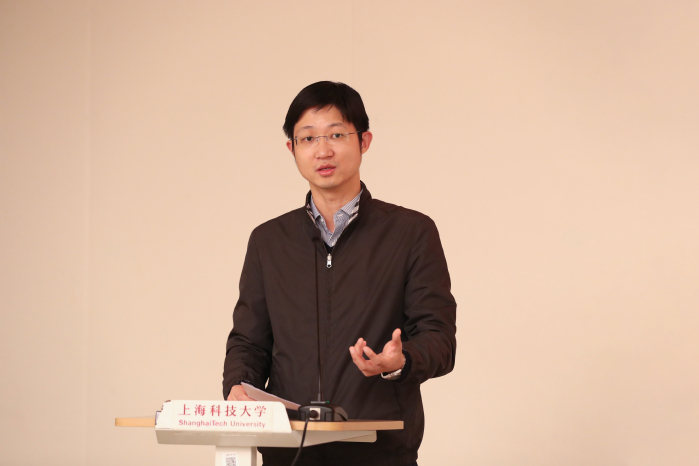
Xu Xuguang
Zhou Pingqiang, associate dean of the School of Information Science and Technology (SIST), detailed the patent licensing project for electromagnetic sensing and detection. This project addresses the urgent need for advanced electromagnetic sensing components and intelligent systems. “Supported by NICE’s grant-and-investment policy and Baoshan’s investment-first-equity-later policy, Shanghai Finesense, led by Associate Professor Ye Chaofeng, was founded to advance new electromagnetic imaging and intelligent detection systems, which can be used in industrial inspection and weak magnetic measurements in biological fields,” said Zhou. “There are four patents licensed at this conference, including those for spacecraft structural detection array sensors and ultra-weak magnetic measurement sensor technology. These innovations will be applied in nuclear power, aerospace, and new energy equipment, aiming to reduce manufacturing costs, enhance structural safety, and extend equipment lifespan.”
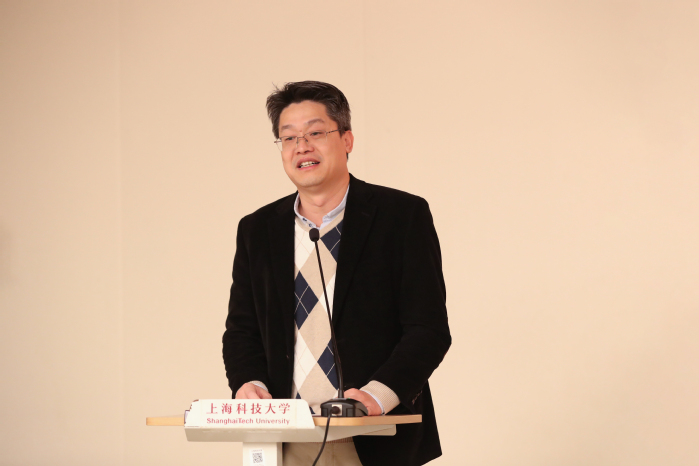
Zhou Pingqiang
In the past five years, ShanghaiTech University has signed patent licensing agreements with 10 enterprises and 12 spin-off companies. Additionally, 34 early-stage venture capitals have signed investment agreements with ShanghaiTech spin-off companies to further accelerate innovation and commercialization efforts.
